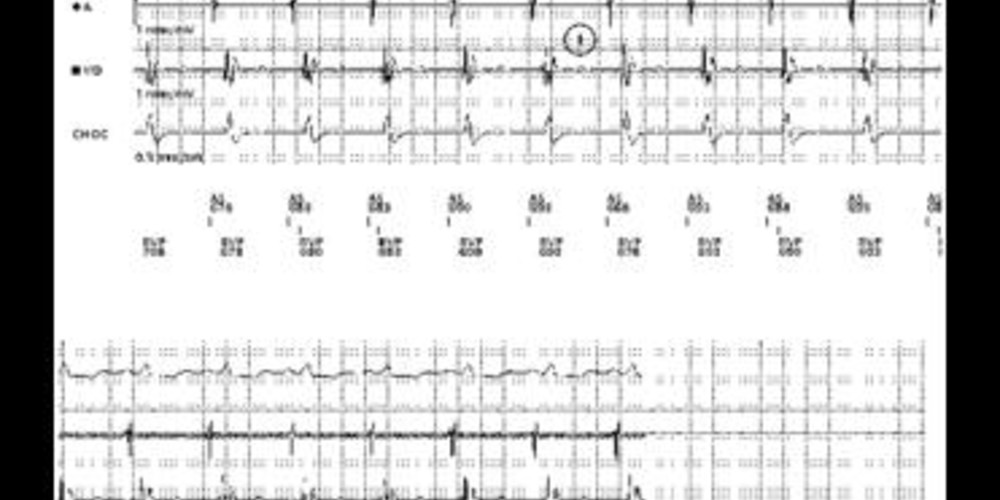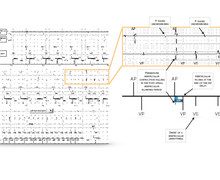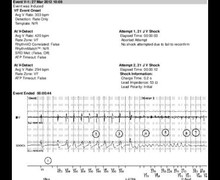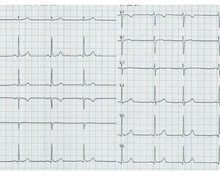Optimization of the VV delay
Tracing
Manufacturer Boston Scientific
Device CRT
Field AV & VV delays optimization
N° 8
Patient
This 67-year-old man (same patient as tracing 3) received a Boston Scientific Cognis triple chamber defibrillator in the context of a dilated cardiomyopathy with left bundle branch block. The VV delay was re-programmed and tracings were recorded during an ambulatory visit.

Graph and trace
- RV pacing.
- BiV stimulation with RV pre-activation 40 ms ahead of LV stimulation.
- Simultaneous BiV stimulation.
- BiV stimulation with LV pre-activation 40 ms ahead of RV stimulation.
- LV stimulation.
Other articles that may be of interest to you







These tracings show the effects of changes in the VV delay on the QRS morphology, including a change in axis between RV and LV stimulation. The morphology of the QRS is a rough indicator of the ventricular activation sequence, which is the target of BiV resynchronization. The optimal configuration should produce a ventricular activation associated with an optimal long-term clinical response. Combining the various VV and AV delays (in this patient, the setting of the AV delay produced variable amounts of fusion), the short-term programming choices are innumerable, though no single parameter currently predicts accurately an optimal long-term clinical response. The automatic settings directly chosen by the device have the advantage of a certain degree of reproducibility, at rest as well as during exercise, though their pathophysiologic rationale and clinical merit remain to be confirmed.